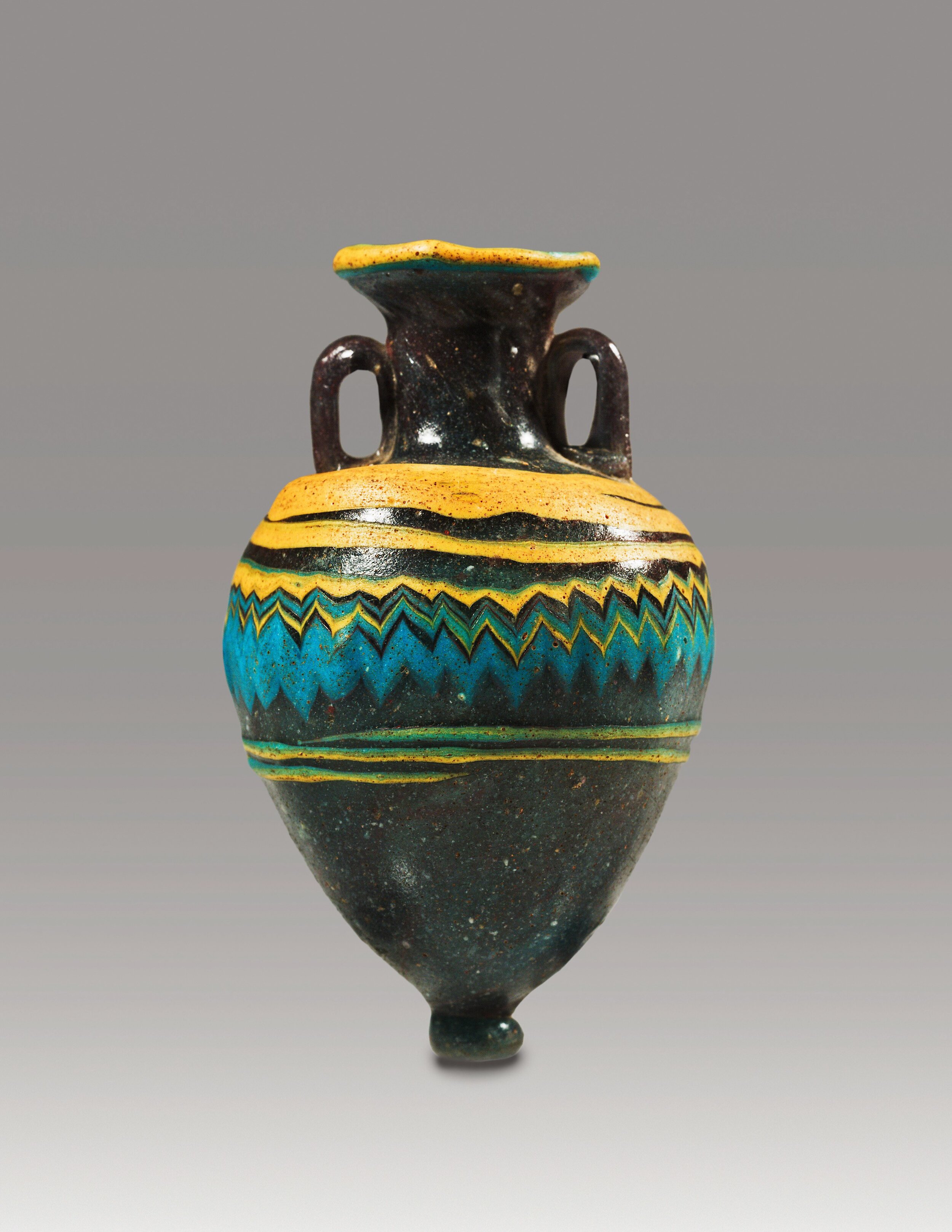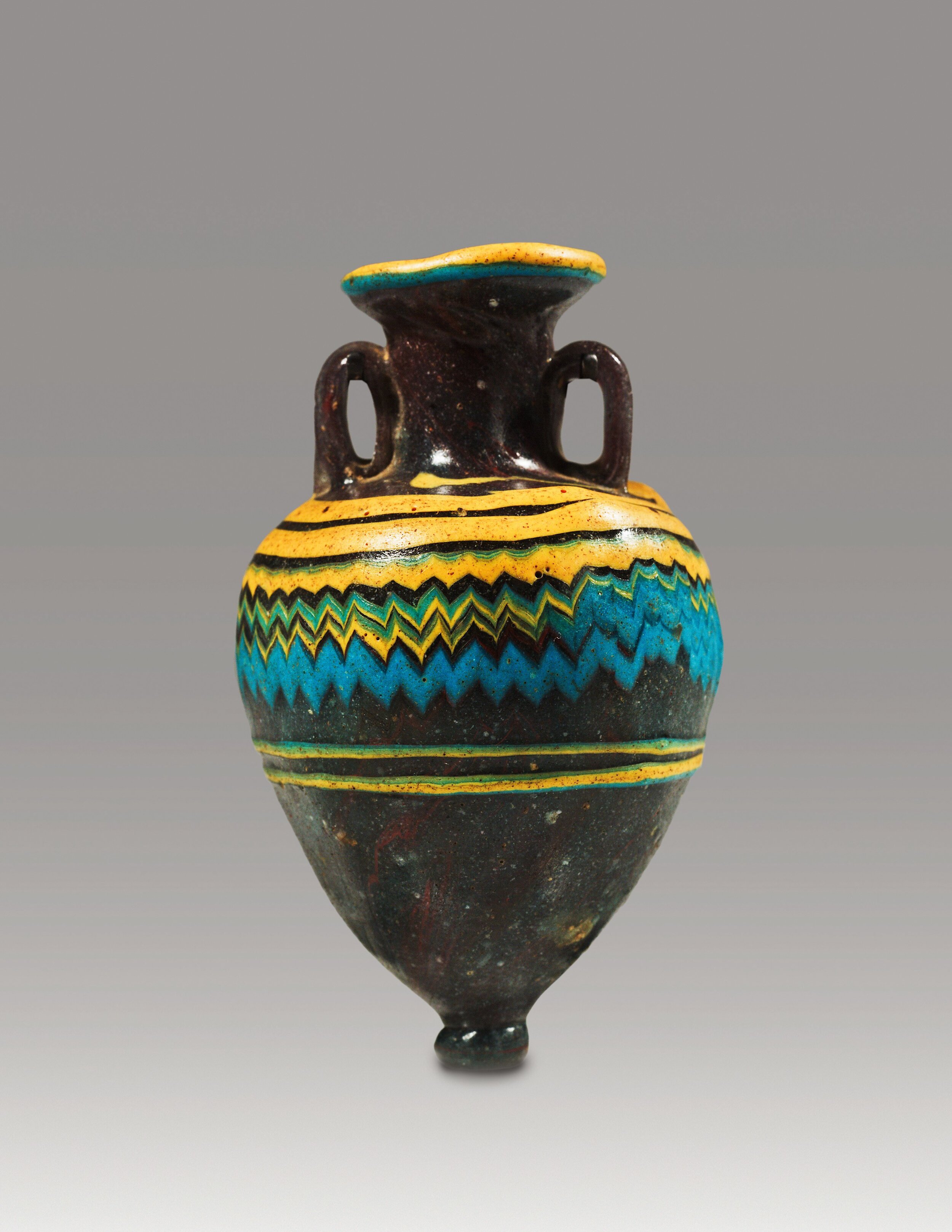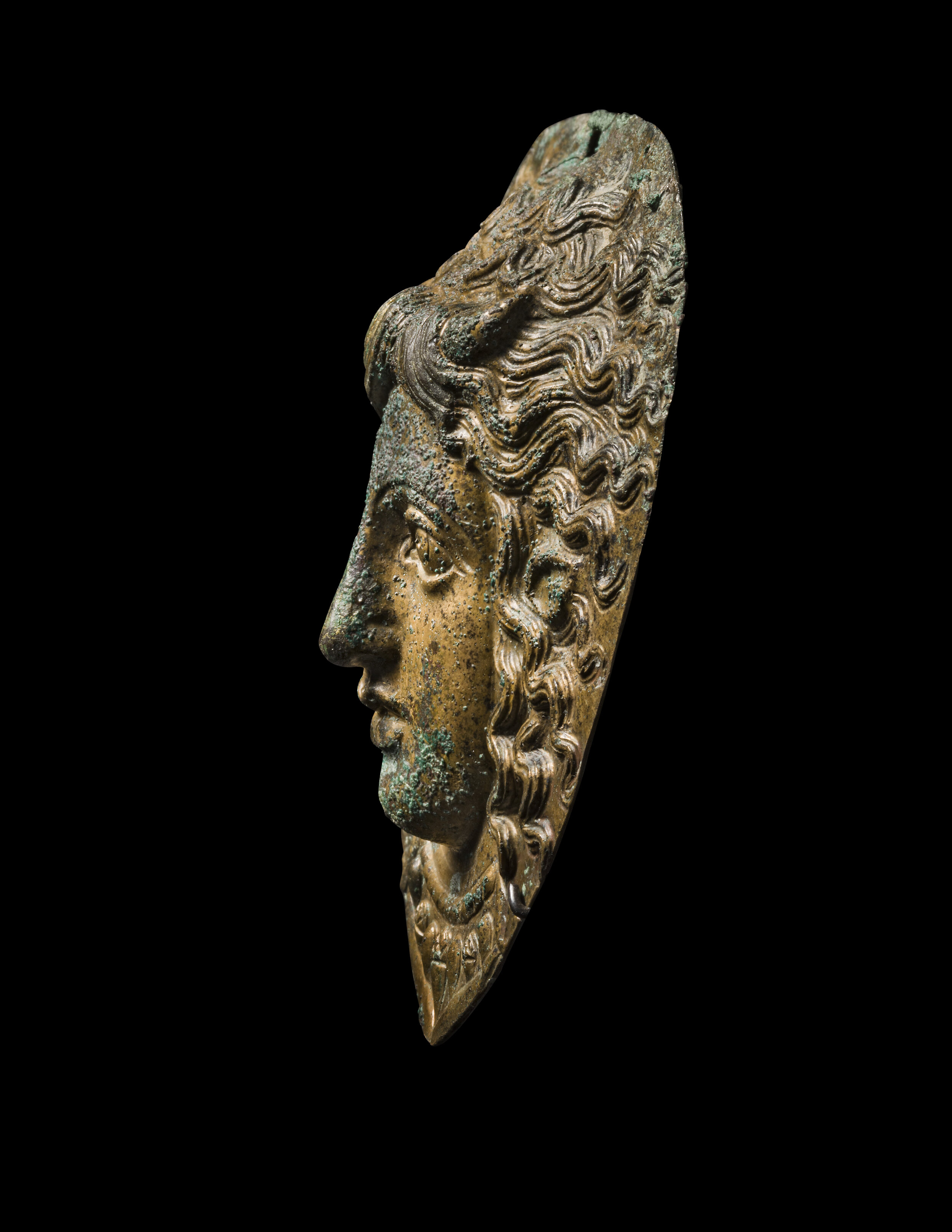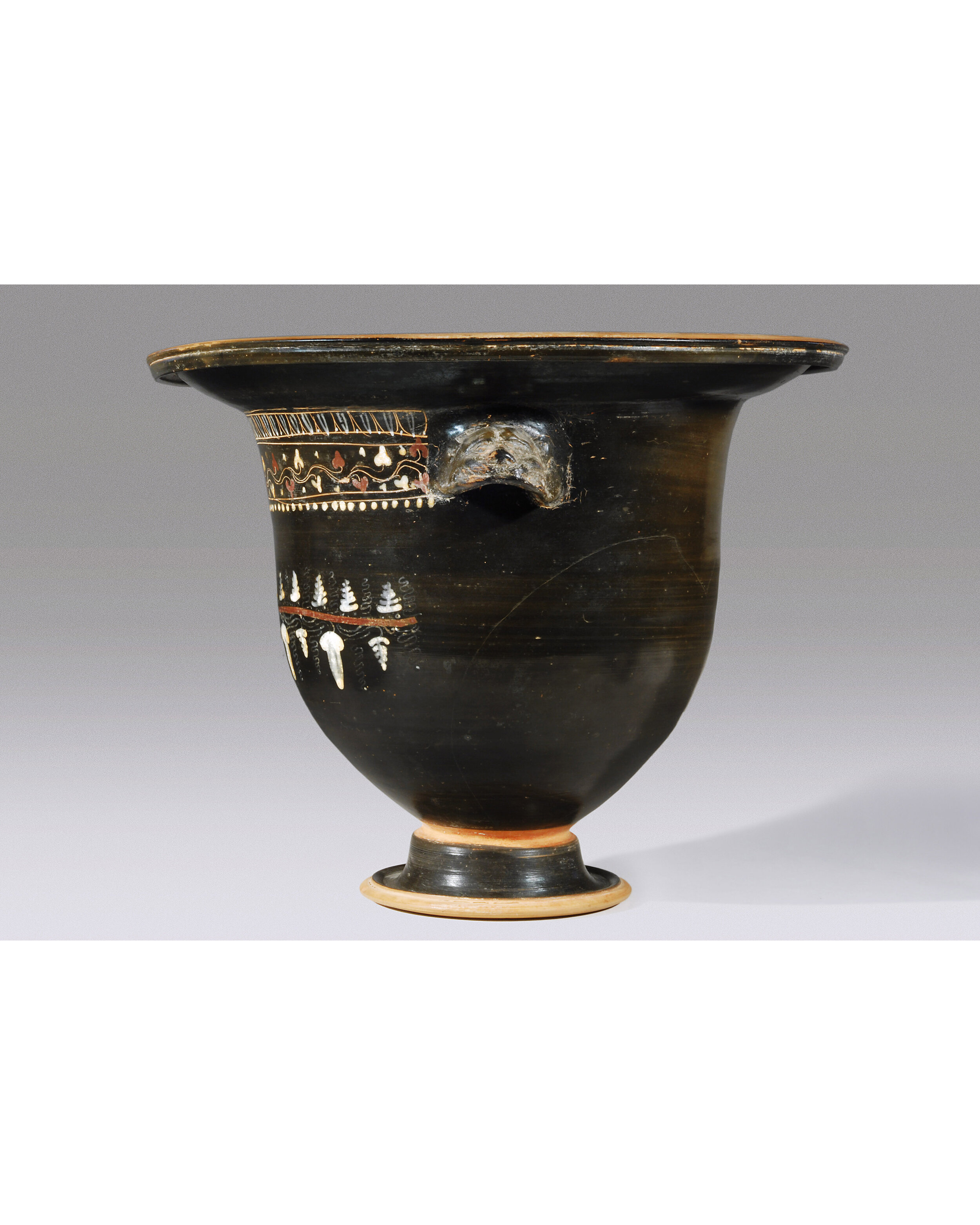Ancient Corinthian Greek Terracotta Standing Actor





Ancient Corinthian Greek Terracotta Standing Actor
Greek, Corinthian, middle of the 5th century B.C.
Terracotta
H: 8.9 cm
Serial: 11337
Provenance: Ex- NAC Embiricos collection.
Published: Exotics of the Classical World, Phoenix Ancient Art, Geneva-New York, 2007, no. 32
The coroplath (a term that indicates an artisan who specializes in the production of terracotta statuettes) used two different techniques for the fabrication of this piece: the modeling by hand of the body and the molding of the head and face. At thebeginning of the 5th century BC, this procedure is known especially from two regions of continental Greece: Corinth and Boeotia.
The figurine represents a standing man whose balance is assured by two legs partially painted black and red and by a pointed tail; on the shoulders, he wears a sort of sunburst cloak, fashioned from a long thin piece of fabric, rounded at the ends. The two arms hold the cloak around him, but they are completely covered.
Contrary to the body, which is executed in a summary fashion, the head is very well modeled, as well as being very large: the remarkable three-dimensional qualities of the mask - the anatomic details are either modeled or finely incised - add to the effects of the bichromy (red for the face, ears and hair; black for the beard and mustache). The man has a long pointed beard while a mass of thick wavy hair frames his brow; his ears are made from two clay buttons, modeled separately and slightly hollowed.
A small group of three statuettes in the Cleveland Museum of Art, probably originally Boeotian, and some other pieces from the British Museum in London (attributed to Corinthian artists) figure among the best parallels for this image: he is related to the satyrs (identified by the general typology of their faces and especially their pointed ears), who, because of their energetic movements and sharp gestures, seem to be in the middle of performing in a satyr play, a theatrical genre about which we know very little. In spite of the obvious connections, it is not certain that this figurine represents a satyr, but may perhaps be a human or divine figure: his face recalls Dionysiac masks that were suspended from Hermaic pillars.









